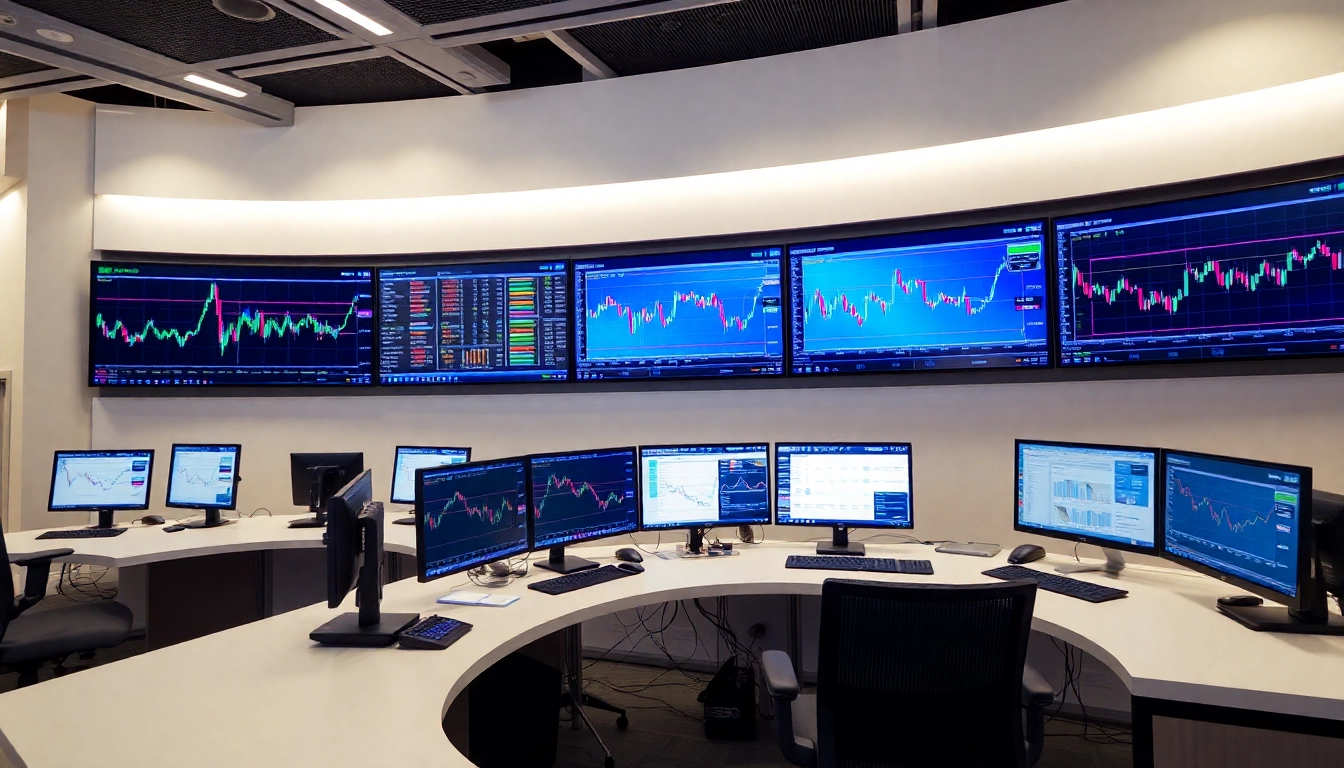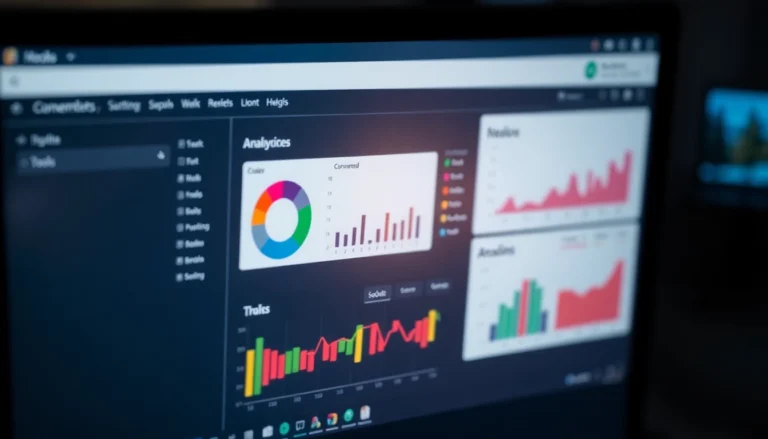
Mastering the Online Trading Guide: Strategies for Modern Investors
In today’s fast-paced financial landscape, online trading has become an essential avenue for individual investors seeking to grow their wealth, diversify portfolios, and capitalize on global market opportunities. As markets fluctuate worldwide—evidenced by recent movements such as Europe stocks remaining steady after impressive gains in Chinese indices, Asian stocks rising near five-week lows on dollar stability, and gold reaching a four-month high—understanding the nuances of online trading is more critical than ever. Whether you’re a novice or an experienced trader, this comprehensive guide aims to equip you with the knowledge, tools, and strategies necessary to navigate the dynamic world of online investing effectively. For an accessible starting point, explore our Online Trading Guide and learn how to develop a resilient and profitable trading approach.
Understanding the Basics of Online Trading
What Is Online Trading and How Does It Work?
Online trading involves buying and selling financial instruments—such as stocks, commodities, currencies, or derivatives—through internet-based platforms. Unlike traditional trading, which required physical presence or phone-based orders, online trading enables individuals to execute transactions swiftly via trading platforms provided by brokerages. These platforms connect traders to global markets, offering real-time data, order execution, and portfolio management tools. The core process involves analyzing market conditions, placing orders (market, limit, stop-loss), and managing positions through user-friendly interfaces. Advances in technology have democratized access, allowing retail investors to participate alongside institutional players.
Key Terms Every Trader Must Know
- Bid & Ask: The bid price is what buyers are willing to pay; the ask is what sellers want.
- Spread: The difference between bid and ask prices.
- Leverage: Borrowed funds used to increase potential returns, with heightened risk.
- Margin: The collateral required to open or maintain a leveraged position.
- Stop-Loss & Take-Profit: Orders to limit losses or lock in gains automatically.
- Liquidity: The ease of buying or selling an asset without affecting its price.
Choosing the Right Trading Platform
Selecting an optimal trading platform is crucial. Factors to consider include user interface intuitiveness, available trading instruments, execution speed, fee structure, customer support, security features, and educational resources. Leading platforms like MetaTrader 4/5, Interactive Brokers, and eToro offer robust tools for both beginner and advanced traders. Conduct trial runs with demo accounts to assess platform responsiveness before committing real funds. Remember, a feature-rich and reliable platform aligns with your trading style and risk appetite.
Developing a Winning Trading Strategy
Technical Analysis and Chart Reading
Technical analysis involves examining historical price data and trading volumes through charts to identify patterns and signals that forecast future movements. Common tools include moving averages, Relative Strength Index (RSI), MACD, Bollinger Bands, and Fibonacci retracements. Understanding candlestick patterns such as doji, hammer, or engulfing signals can also provide valuable entry and exit points. For instance, recent gains in Chinese indices and Asian stocks suggest a potential bullish trend, which traders could verify using technical signals before entering positions.
Fundamental Analysis for Long-Term Success
Fundamental analysis assesses a company’s or economy’s intrinsic value based on financial statements, macroeconomic indicators, geopolitical developments, and industry trends. For example, recent surges in gold prices due to US rate cut bets exemplify how macroeconomic shifts influence markets. Evaluating earnings reports, interest rates, inflation data, and policy decisions enables traders to identify undervalued assets or emerging sectors, like green energy investments by pension funds and insurers aiming to boost renewable allocations.
Risk Management and Position Sizing
Effective risk management safeguard your capital against adverse market moves. Implementing stop-loss orders, setting realistic profit targets, and controlling position sizes based on your total capital are essential. For example, limiting risk to 1-2% of your trading account per trade helps maintain discipline. In volatile environments like the cryptocurrency market, traders must be even more vigilant, using leverage cautiously to prevent outsized losses.
Advanced Trading Techniques and Tools
Leveraging Margin and Leverage Safely
Leverage amplifies your buying power but also increases risk. Proper understanding of leverage ratios and margin requirements is vital. For instance, in currency trading, traders might use leverage ratios of 10:1 or higher, magnifying both gains and losses. Developing strict protocols for margin calls and maintaining sufficient collateral prevents margin liquidation during sudden market corrections.
Automated Trading and Algorithmic Strategies
Automation involves programming trading algorithms to execute strategies without manual intervention. Using platforms with integrated scripting capabilities allows traders to develop Expert Advisors (EAs) that react to predefined conditions. For example, algorithms can be employed to exploit short-term volatility around economic data releases, such as those influencing gold or European stocks. Automating strategies reduces emotional bias and ensures consistent execution.
Utilizing Trading Indicators and Signals
Indicators like Moving Averages, RSI, and Bollinger Bands assist traders in identifying market momentum, overbought/oversold conditions, and trend reversals. Combining multiple signals enhances decision accuracy. For example, rising gold prices amidst rate-cut speculation may be confirmed through MACD crossovers and RSI divergence, signaling a potential buying opportunity. Developing a robust watchlist and alert system ensures timely responses to market movements.
Optimizing Your Trading Performance
Tracking and Analyzing Your Trades
Maintaining a trading journal records each position’s entry and exit points, rationale, and outcomes. Analyzing these logs helps identify strengths, weaknesses, and recurring mistakes, such as overleveraging during volatile periods. Regular review metrics include win/loss ratio, average gain/loss, and maximum drawdown. Such insights drive continuous improvement and strategic refinement.
Psychology of Trading and Emotional Discipline
Managing emotions is fundamental. Fear and greed can impair judgment, leading to impulsive decisions like holding onto losing trades or overtrading during booms. Techniques like meditation, setting strict trading plans, and adhering to stop-loss levels foster emotional discipline. A recent example is the surge in gold prices driven by US rate-cut bets—resisting the urge to chase hype helps preserve capital.
Adjusting Strategies Based on Market Trends
Markets are ever-evolving. Staying informed about macroeconomic data releases, geopolitical events, and investor sentiment supports timely strategy adjustments. For instance, the rising interest in legal cannabis sector investments and renewable energy allocations reflect shifting economic priorities, which can be exploited through sector rotation strategies or thematic investing.
Regulations and Legal Considerations
Understanding Market Regulations in Different Regions
Awareness of regional regulations ensures compliance and protects investments. For example, recent legal changes in Germany and Florida regarding cannabis legalization have prompted new investment opportunities and legal considerations. Similarly, cryptocurrency regulations vary between jurisdictions. Always verify each platform’s licensing and adhere to local laws related to trading derivatives, CFDs, or cryptocurrencies.
Protecting Yourself from Scams and Frauds
Due diligence involves researching broker credibility, avoiding unauthorized platforms, and being cautious of guarantees of profits. Verifying licensing credentials, reading user reviews, and understanding fee structures are essential defenses. The increasing volume of fraudulent schemes targeting crypto investors necessitates vigilance and the adoption of secure, regulated platforms.
Future Trends in Online Trading and Investing
The landscape continues to evolve with innovations like inverse Bitcoin ETFs in Hong Kong, AI-powered trading assistants, and increased adoption of blockchain. ESG investing, particularly in renewable energy and socially responsible assets, is gaining prominence. Staying ahead involves continuous education, leveraging data analytics, and adapting to technological advancements.




